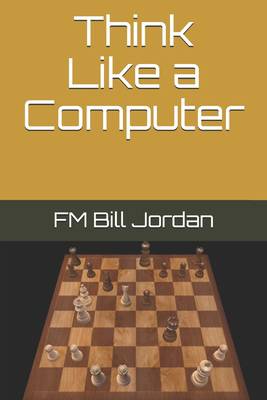
- Retrait gratuit dans votre magasin Club
- 7.000.000 titres dans notre catalogue
- Payer en toute sécurité
- Toujours un magasin près de chez vous
- Retrait gratuit dans votre magasin Club
- 7.000.000 titres dans notre catalogue
- Payer en toute sécurité
- Toujours un magasin près de chez vous
Description
Computer chess programs (or chess-engines) have become very strong. Not only can be used as practice, they can be used to analyse games or study openings. Books have been written on how a player can study with the assistance of a chess engine.
In the 1970s there was a popular chess book called Think Like a Grandmaster by Soviet GM Alexander Kotov. He later wrote Play Like a Grandmaster and Train Like a Grandmaster. He wrote from his own experience and other grandmasters he rubbed shoulders with. He wrote on tree of analysis, candidate moves, avoiding blunders, when not to analyse, positional ideas, endgames etc. He gave ordinary chess players an insight into the mind of a grandmaster. To some extent this book helped them to think like a grandmaster.
These days strong computer programs (called chess engines) are very strong indeed. The top engines currently have ELO ratings above3500.They can often analyse faster and more reliably than strong grandmaster.
We have Think Like a Grandmaster so why not have Think Like a computer?
There are many things we can learn from the strengths and weaknesses of chess engines.
What can we learn from the way computers play?
The author has been writing his own hobby chess engines since the 1990s. This book is designed to impart knowledge gained from this experience to chess players of all levels.
Note that this book is not about using computers to practice with or study chess. Its about what chess-players can learn from how computers play chess. Its also for readers who may be curious to learn something about how computers play chess. You do not need to be computer programmer to learn from how computers play chess. You do not even need a chess set to read this book.
Spécifications
Parties prenantes
- Auteur(s) :
- Editeur:
Contenu
- Nombre de pages :
- 74
- Langue:
- Anglais
Caractéristiques
- EAN:
- 9781790980932
- Date de parution :
- 28-03-19
- Format:
- Livre broché
- Format numérique:
- Trade paperback (VS)
- Dimensions :
- 152 mm x 229 mm
- Poids :
- 122 g







